Explore Aswan - Egypt Travel, Africa
Aswan, located along the majestic Nile River in Upper Egypt, is a captivating destination brimming with rich history and vibrant culture. This serene city, known for its scenic beauty and peaceful atmosphere, is a gateway to the Nubian world and ancient Egypt. With its iconic landmarks, warm hospitality, and unique experiences, Aswan promises an unforgettable journey for those seeking both relaxation and adventure. Whether you're exploring ancient temples or cruising the Nile on a traditional felucca, Aswan offers a perfect blend of history, nature, and culture.
Population: Approximately 380,000 in 2021.
Economy: Aswan's economy majors in tourism, agriculture, and trade. The city attracts visitors with its historic sites and natural beauty, while agriculture supports local livelihoods, particularly in the Nile Valley.
Landmarks: Famous for the Philae Temple, Abu Simbel, and the Unfinished Obelisk.
Egypt
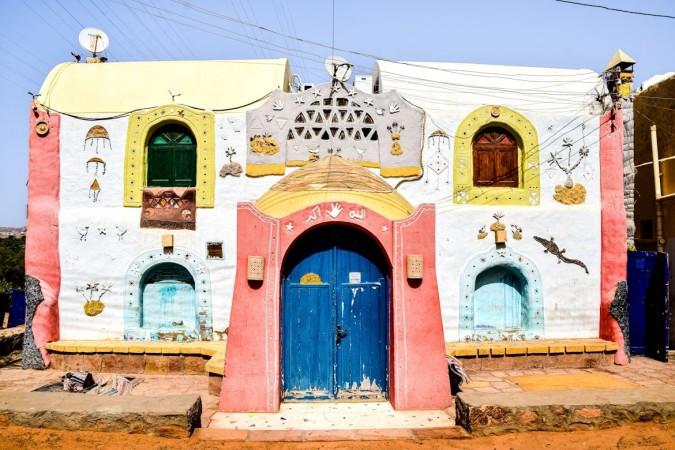
Overview of Aswan
History & Cultural Influence
Aswan's history stretches back thousands of years, making it a key location in the story of ancient Egypt. The city was once a bustling trade center, linking Egypt to Nubia and the rest of Africa. Today, Aswan stands as a living testament to this rich past, with monuments from various periods still standing tall. Beyond the Pharaonic period, Aswan has been influenced by Roman and Islamic cultures, contributing to its diverse heritage. Walking through the city, you’ll feel the presence of these layers of history, with Nubian traditions adding an even deeper richness to Aswan’s cultural landscape.
Interaction with the Locals
Aswan has a significant portion belonging to the Nubian community, an ethnic group with deep historical roots in the region. The citizens of Aswan are known for their warmth and hospitality, welcoming visitors with open arms. The Nubian culture, known for its colorful traditions, music, and cuisine, plays a vital role in the city's identity. While Arabic is the official language, many locals speak Nubian dialects, and English is commonly spoken in tourist areas. The community’s connection to the Nile shapes their daily life and traditions.
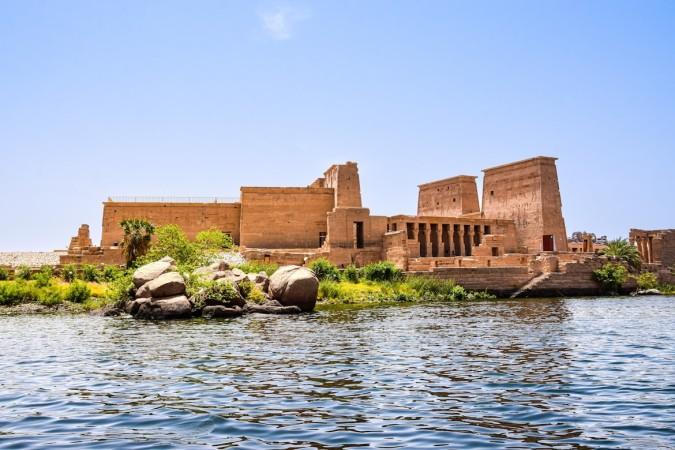
The Temple of Isis - © AXP Photography
Top Attractions in Aswan
Aswan is a treasure trove of historical and cultural landmarks, offering a blend of ancient wonders and natural beauty. Each of these attractions provides a unique glimpse into Aswan’s layered history and the profound influence of both ancient Egypt and Nubian culture on the region.
- Philae Temple: Located on Agilkia Island, Philae Temple is a breathtaking example of ancient Egyptian religious architecture. Originally built to honor the goddess Isis, the temple complex is made up of several smaller temples and shrines. It’s famous for its hieroglyphs and intricate carvings, which tell stories of ancient deities.
- Abu Simbel: These two massive rock-cut temples, carved directly into the mountainside, were constructed by Ramses II to commemorate his victory at the Battle of Kadesh and honor the gods. Twice a year, during the solar alignment phenomenon, the sun illuminates the inner sanctuary of the temple, lighting up statues of Ramses and the gods—a spectacle that attracts visitors from around the world.
- Aswan High Dam: Completed in 1970, the Aswan High Dam transformed Egypt’s economy by providing hydroelectric power and regulating the flooding of the Nile. The dam created Lake Nasser, one of the world’s largest artificial lakes, and allowed Egypt to reclaim large areas of desert for agriculture.
- Unfinished Obelisk: The Unfinished Obelisk, located in a historic quarry, is a one-of-a-kind monument that teaches visitors about ancient stone masons' techniques. Had it been completed, it would have stood at an incredible 42 meters (137 feet) and weighed over 1,200 tons, making it the largest obelisk in Egypt.
- Elephantine Island: This lush island in the middle of the Nile has been a key trading post for centuries. It is home to the Temple of Khnum, which honors the ram-headed god of the Nile's source. Visitors can explore the Aswan Museum on the island, which houses artifacts found during archaeological digs, or take a walk through the traditional Nubian village, where brightly painted houses line the riverbanks.
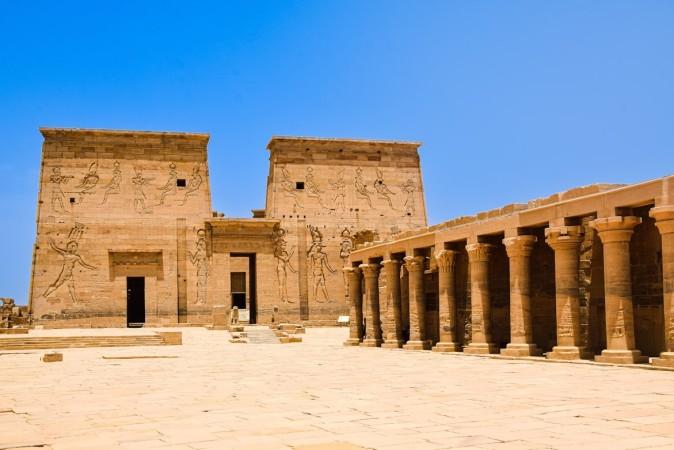
Philae Temple - © AXP Photography
Must-Try Dishes in Aswan
Aswan’s cuisine is a reflection of its Nubian and Egyptian heritage, offering a unique blend of flavors that are sure to delight food enthusiasts. From hearty stews to fresh Nile fish, the local dishes showcase a rich culinary tradition that highlights the region’s natural resources and cultural diversity.
- Fata: Fata, a popular Egyptian dish, is a tasty blend of rice, crunchy bread, and garlicky tomato sauce. It's often served with lamb or chicken and is traditionally eaten during celebrations, especially in Nubian households.
- Ful Medames: Ful Medames, a traditional Egyptian breakfast, consists of slow-cooked fava beans seasoned with olive oil, lemon, and garlic. In Aswan, it’s often accompanied by a variety of fresh vegetables and bread, making it a hearty start to the day.
- Kofta: Grilled meatballs made from a mix of lamb and beef, Kofta is flavored with spices such as cumin and coriander. In Aswan, these juicy skewers are often served with tahini sauce and flatbread.
- Dokka Fish: Aswan's proximity to the Nile means fresh fish is a local staple. Dokka fish, marinated and grilled with a special blend of herbs and spices, is a must-try dish for seafood lovers.
- Molokhia: A traditional dish made from jute leaves, Molokhia is served as a soup with rice or bread. In Aswan, it's flavored with garlic and coriander, creating a comforting, earthy taste that’s unique to the region.
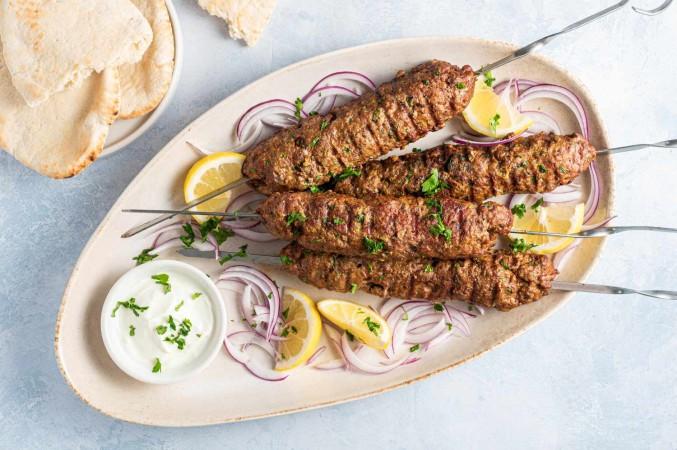
Kofta - © The Spruce Eats
Festivals & Local Celebrations
Aswan is home to vibrant festivals and celebrations that showcase the city’s rich cultural heritage. These events provide a window into the local traditions and offer visitors a chance to experience the community’s joyful spirit firsthand.
- Sun Festival at Abu Simbel: This biannual event takes place on February 22nd and October 22nd, when the rising sun aligns perfectly to illuminate the inner sanctuary of the Abu Simbel Temple, lighting up the statues of Ramses II and the gods. Thousands of visitors gather to witness this ancient astronomical wonder and enjoy live music, traditional dances, and food.
- Nubian Cultural Festival: Celebrating the rich Nubian heritage of Aswan, this festival showcases traditional music, dance, art, and handicrafts. Visitors can immerse themselves in the vibrant culture by participating in workshops or simply enjoying the performances, making this a great opportunity to connect with the local community.
- Moulid of Sayyid al-Badawi: Aswan hosts the Moulid, or birthday celebration, of the revered Islamic saint, Sayyid al-Badawi. This religious festival is marked by lively street processions, Sufi chanting, and communal feasting, offering a unique glimpse into local spiritual traditions.
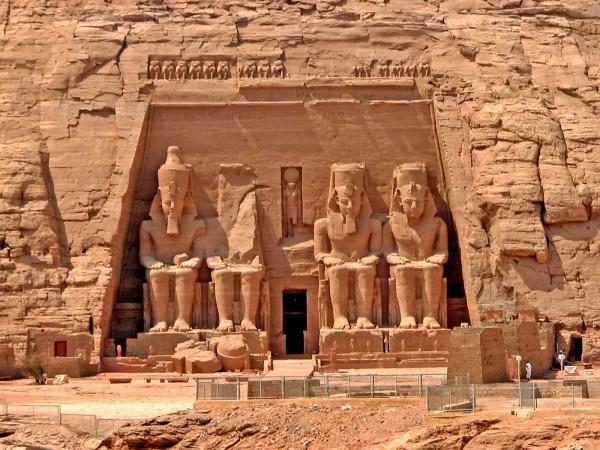
Sun Festival at Abu Simbel - © Britannica
What to Do in Aswan
- Felucca Sailing: A quintessential Aswan experience, sailing on a traditional felucca along the Nile is a peaceful and scenic way to explore the city’s surroundings. These boats glide gently across the water, offering stunning views of Elephantine Island, the Botanical Gardens, and the West Bank’s desert landscapes.
- Nubian Village Tours: Visit a traditional Nubian village to experience the vibrant culture and hospitality of the Nubian people. Here, you can explore colorful homes, enjoy local music and dances, and learn about the community’s customs and history.
- Temple Tours: No visit to Aswan is complete without exploring its iconic temples, including Philae, Abu Simbel, and the Temple of Kom Ombo.
- Camel Rides: For a more adventurous experience, take a camel ride through the desert, where you can visit ancient ruins or simply enjoy the stunning views of the Nile and its surrounding landscape.
- Aswan Botanical Garden Tours: Located on Kitchener’s Island, this lush garden is home to a wide variety of exotic plants and trees. It’s the perfect spot for a relaxing afternoon stroll.
Shopping in Aswan
- Aswan Souq: The Aswan Souq is a lively marketplace that runs along the city’s main street. Here, you’ll find a wide variety of goods, including handcrafted jewelry, spices, Nubian textiles, and local perfumes. The vibrant colors and fragrant smells of the souq make it an exciting place to explore.
- Nubian Handicraft Stores: Aswan is known for its Nubian crafts, including handwoven baskets, beaded jewelry, and pottery. These handmade items make for unique and meaningful souvenirs. Many shops in the Nubian villages sell directly from the artisans, allowing you to support the local community.
- Egyptian Cotton Stores: Renowned for its quality, Egyptian cotton is a popular purchase in Aswan. From scarves to clothing and bedding, cotton goods found in the souqs are both high-quality and affordable.
- Traditional Spice Stores: Aswan’s markets are filled with aromatic spices like cumin, coriander, and saffron. These spices make excellent gifts or personal mementos of your trip, offering a taste of Aswan to bring back home.
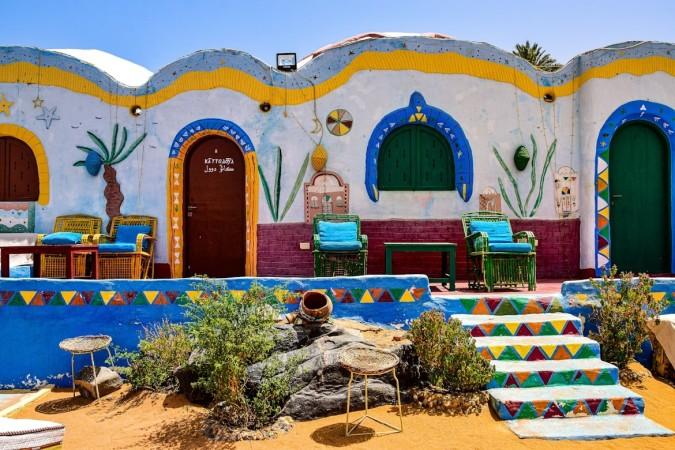
Visit Nubian Village - © AXP Photography
Weather in Aswan: Best Time for Visit
Aswan’s weather is dominated by a hot desert climate, offering nearly year-round sunshine. Each season brings unique tourism opportunities, and understanding the climate will help you plan the ideal time to visit.
Spring in Aswan
Spring is another ideal time to visit Aswan, with temperatures ranging from 25°C to 30°C (77°F to 86°F). It’s a favored time for travelers who want to avoid the winter crowds but still enjoy pleasant weather. This season is ideal for outdoor activities like visiting the Nubian Villages, hiking in the desert, and exploring nearby attractions like Abu Simbel.
Summer in Aswan
Summer in Aswan can be scorching, with daytime temperatures often exceeding 40°C (104°F). While it’s less common for tourists to visit during these months due to the intense heat, it’s an ideal time for budget travelers, as accommodation prices drop significantly, and popular attractions are less crowded. If you visit during this period, plan activities in the early morning or late afternoon to avoid the midday sun, and enjoy the relative tranquility of the city.
Autumn in Aswan
Autumn marks the beginning of Aswan’s peak tourism season, as temperatures start to cool, ranging between 25°C to 30°C (77°F to 86°F). This season is perfect for exploring the city’s outdoor attractions, such as Philae Temple and Elephantine Island, with pleasant weather that makes sightseeing enjoyable. Aswan’s beautiful Nile cruises also become highly popular during this period.
Winter in Aswan
Winter is the main travel season in Aswan, with daytime temperatures ranging from 20°C to 25°C (68°F to 77°F) and milder evenings. This is the best time for tourists to explore Aswan’s historical sites, take leisurely felucca rides along the Nile, and enjoy outdoor markets without the intense heat. Expect more crowds and higher accommodation rates, but also the most vibrant cultural scene.
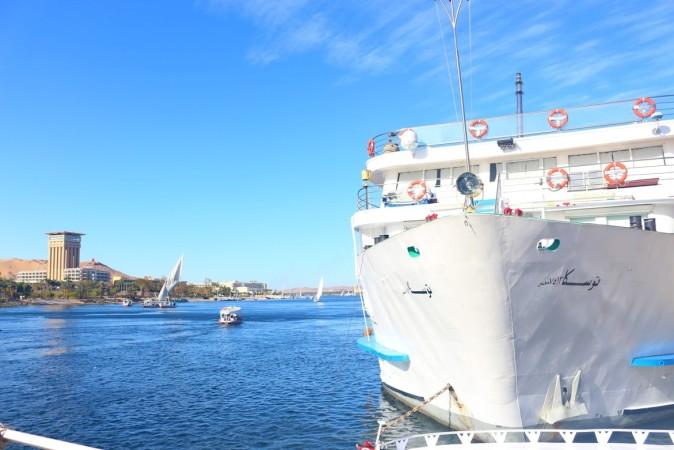
Setting sail at Aswan's coast - © Abdullah Helwa
Essential Travel Information
Getting Around Aswan
- Feluccas: The traditional felucca, a wooden sailboat, is not only a scenic way to travel but also a quintessential Aswan experience. Feluccas can be hired for short trips across the Nile or longer excursions to sites like Elephantine Island or the Nubian Villages.
- Taxis: Taxis are widely available in Aswan, and most drivers are familiar with the popular tourist destinations. It’s advisable to agree on a fare before starting your journey, as meters are rarely used. Some taxi drivers may speak basic English, but it’s useful to have your destination written down in Arabic.
- Local Buses and Minibuses: For a more budget-friendly option, local buses and minibuses are available for travel around the city. While these may be less comfortable than taxis, they provide a more authentic glimpse into daily life in Aswan.
- Horse-drawn Carriages: Known as caleches, these horse-drawn carriages offer a charming way to tour Aswan’s Corniche. This leisurely mode of transport is perfect for short trips and provides a nostalgic feel of ancient times.
- Boat Taxis: To cross the Nile, boat taxis are available at many points along the river. These small motorboats are a quick and scenic way to get to islands or the west bank.
ATM & Banking Services
Aswan offers convenient access to ATMs and modern banking services throughout the city, particularly in tourist areas, major hotels, and the Corniche. International debit and credit cards are generally accepted at most ATMs, and many machines offer instructions in English. Currency exchange services are also available at banks, exchange bureaus, and large hotels. While credit cards are accepted in many tourist-centric locations, it’s advisable to carry cash for smaller purchases at local markets or for tipping.
Where to Stay in Aswan
- Luxury Hotels: For those seeking an indulgent experience, Aswan boasts several high-end hotels along the Nile, offering stunning river views, lavish amenities, and a blend of modern comforts with historical charm. These hotels often feature luxurious pools, spa services, and fine dining, providing an upscale stay for discerning travelers.
- Mid-Range Hotels: Aswan’s mid-range accommodations offer a balance of comfort and affordability. These hotels typically provide comfortable rooms, good service, and essential amenities like pools and restaurants, making them ideal for families, couples, or solo travelers looking for convenience without the high price tag.
- Budget Guesthouses: For budget-conscious travelers, Aswan has a variety of cozy guesthouses that provide a more intimate, local experience. These smaller establishments often feature simple rooms, friendly hosts, and an opportunity to connect with other travelers. They are perfect for those who prefer an authentic and affordable stay.
- Nubian Villages: For a truly immersive experience, staying in a traditional Nubian village offers a unique opportunity to enjoy the hospitality of the local community. These accommodations often combine cultural authenticity with basic comforts, providing a peaceful retreat and a chance to learn more about Nubian culture.
Des articles pour vous

Voyage à Kampong Cham - Cambodge, Asie
Kampong Cham est une charmante ville riveraine située le long du fleuve Mékong. Connue pour son importance historique et ses attractions culturelles, Kampong Cham offre un mélange d'architecture coloniale, de temples anciens et de paysages pittoresques. Kampong Cham est reliée au district voisin de Tbong Khmum par le pont Kizuna, le premier pont au Cambodge à traverser le fleuve Mékong, en faisant un carrefour de transport crucial pour la région.
Population : Estimation de 80 000 habitants (en 2024)
Économie : Bien que n'étant pas encore une destination touristique majeure, Kampong Cham propose des sites culturels et historiques, tels que le temple Wat Nokor et le pont en bambou de Koh Pen, ainsi que des attractions naturelles comme des forêts et des chutes d'eau. Le gouvernement se concentre sur le développement du tourisme pour améliorer l'économie locale.
Points d'intérêt : Wat Nokor Bachey, Phnom Han Chey, Phnom Pros et Phnom Srey, pont en bambou de Koh Pen, Wat Joy T'maw, Preah Theat Teuk Chha, piste d'atterrissage abandonnée de l'US.

Explorez Nha Trang - Voyage au centre du Vietnam, Asie
Nichée le long de la magnifique côte du Vietnam, Nha Trang se distingue comme une destination de premier choix pour les voyageurs. Cette ville côtière, réputée pour ses superbes plages et sa vie marine foisonnante, s'adresse à tous. Nha Trang vous accueille à bras ouverts, que vous recherchiez des aventures, de la culture ou de la détente au bord de la mer. Ce guide vous fera découvrir les points forts de cet endroit magnifique, facilitant ainsi la planification de votre voyage de manière fluide et excitante.
Population : Environ 423 000 habitants en 2019.
Économie : L'un des principaux centres touristiques du Vietnam et la plus grande économie de la province de Khanh Hoa.
Sites emblématiques : Célèbre pour les tours Cham de Po Nagar, la cathédrale de Nha Trang et l'île Hon Mun.

Voyage à Sihanoukville - Cambodge, Asie
Sihanoukville, une ville côtière du sud-ouest du Cambodge, est la capitale de la province de Preah Sihanouk. Située sur une péninsule le long du golfe de Thaïlande, la ville est bien reliée à Phnom Penh par des autoroutes principales et dispose d'un aéroport international.
La ville abrite le seul port en eau profonde du Cambodge, jouant un rôle crucial dans la logistique et le commerce du pays. Les plages magnifiques de Sihanoukville, telles qu'Ochheuteal et Serendipity, attirent aussi bien les touristes nationaux qu'internationaux. Le développement économique a prospéré ces dernières années, en particulier grâce à la création de la Zone économique spéciale de Sihanoukville (SSEZ) et aux investissements chinois dans les casinos, l'immobilier et les stations balnéaires. La ville offre également des attractions naturelles telles que le parc national de Ream et plusieurs îles voisines, en faisant une destination variée pour les voyageurs d'affaires et de loisirs.
Population : La population de Sihanoukville était d'environ 160 000 habitants en 2024.
Économie : Sihanoukville, une ville côtière en pleine croissance au Cambodge, se distingue par son mélange dynamique de développement économique et de tourisme. La Zone économique spéciale de Sihanoukville (SSEZ) est devenue un pôle industriel majeur, abritant plus de 180 entreprises et créant des milliers d'emplois. Avec le seul port en eau profonde du Cambodge, la ville joue un rôle clé dans le commerce et la logistique du pays. Bien qu'elle se soit transformée d'une petite ville balnéaire tranquille en un centre urbain animé, Sihanoukville reste célèbre pour ses plages immaculées, attirant des touristes tout au long de l'année. Les investissements chinois importants ont alimenté la croissance des hôtels, des casinos et de l'immobilier, faisant de la ville un centre d'opportunités économiques et d'hospitalité.
Monuments : Plage d'Otres, Plage d'Ochheuteal, Plage de l'Indépendance, Parc national de Ream, Chute d'eau de Kbal Chhay, Monument des Lions d'Or, Wat Leu.

Explorez Kharkhorin - Voyage en Mongolie, Asie
Bienvenue à Kharkhorin, un trésor historique niché au cœur de la Mongolie. Ancienne capitale vibrante de l'Empire Mongol sous le légendaire Gengis Khan, Kharkhorin se dresse comme un témoignage de la riche culture et de l'histoire de la Mongolie. Cette ville antique possède une combinaison unique d'importance historique et de paysages époustouflants, en faisant une destination incontournable pour un voyage de rêve en Mongolie. En mettant le pied à Kharkhorin, vous ferez un saut dans le temps, à une époque de grands palais, de routes commerciales prospères et d'échanges culturels sans pareils. Que vous soyez intrigué par les ruines anciennes, désireux d'explorer les traditions locales ou simplement en quête d'une immersion dans la beauté naturelle de la Mongolie, Kharkhorin a quelque chose à offrir à chacun.
Population : Environ 1 000 habitants en 2020.
Économie : L'une des attractions touristiques les plus importantes de la Mongolie et l'ancienne capitale de l'Empire Mongol.
Monuments : Célèbre pour les Ruines de Kharkhorin, le Monastère d'Erdene Zuu, et la Vallée d'Orkhon, un site du patrimoine mondial de l'UNESCO.

Explore Luang Prabang - Laos Travel, Asia
Luang Prabang, nestled in northern Laos at the meeting point of the Mekong river and Nam Khan river, is a city celebrated for its rich cultural heritage and stunning natural beauty. Recognized as a UNESCO World Heritage Site in 1995, it boasts a unique blend of traditional Lao and French architecture that has been carefully preserved. Whether you're wandering through its ancient temples, admiring the local architecture, or soaking in the natural beauty of waterfalls and rivers, Luang Prabang offers something for everyone.
Population: Approximately 470,000 in 2020.
Economy: Luang Prabang's economy thrives on tourism, with its UNESCO status drawing visitors to its temples, natural wonders, and cultural experiences. Local crafts, hospitality, and small businesses also play vital roles, supporting the town's sustainable growth. Local crafts, hospitality, and small businesses also play vital roles, supporting the town's sustainable growth.
Landmarks: Famous for the Wat Xieng Thong, Royal Palace Museum (also known as Haw Kham), and Mount Phousi (Phou Si Hill).Luang Prabang, nestled in northern Laos at the meeting point of the Mekong river and Nam Khan river, is a city celebrated for its rich cultural heritage and stunning natural beauty. Recognized as a UNESCO World Heritage Site in 1995, it boasts a unique blend of traditional Lao and French architecture that has been carefully preserved. Whether you're wandering through its ancient temples, admiring the local architecture, or soaking in the natural beauty of waterfalls and rivers, Luang Prabang offers something for everyone.
Population: Approximately 470,000 in 2020.
Economy: Luang Prabang's economy thrives on tourism, with its UNESCO status drawing visitors to its temples, natural wonders, and cultural experiences. Local crafts, hospitality, and small businesses also play vital roles, supporting the town's sustainable growth. Local crafts, hospitality, and small businesses also play vital roles, supporting the town's sustainable growth.
Landmarks: Famous for the Wat Xieng Thong, Royal Palace Museum (also known as Haw Kham), and Mount Phousi (Phou Si Hill).

Explore Vientiane - Laos Travel, Asia
Vientiane, the capital of Laos, offers a unique travel experience for those looking to explore a peaceful Southeast Asian city with a deep connection to its cultural roots. Unlike other bustling capitals, Vientiane boasts a serene and laid-back atmosphere, making it a perfect destination for travelers wanting to escape the chaos of more crowded cities. This charming city sits along the Mekong River, offering scenic views, rich history, and a vibrant yet tranquil way of life. As a gateway to exploring Laos, this capital invites you to slow down, immerse in its heritage, and enjoy the local flavors.
Population: Approximately 840,000 in 2023.
Economy: Vientiane's economy is growing steadily, driven by government services, trade, and tourism. Key sectors include agriculture, manufacturing, and construction. The city's strategic location along the Mekong River supports trade with neighboring Thailand and Vietnam.
Landmarks: Famous for the Pha That Luang, Patuxai, and the Buddha Park (or Wat Xieng Khuan).
